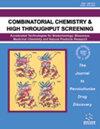新型杯突相关基因特征可预测甲状腺乳头状癌患者的预后
IF 1.6
4区 医学
Q4 BIOCHEMICAL RESEARCH METHODS
Combinatorial chemistry & high throughput screening
Pub Date : 2024-08-28
DOI:10.2174/0113862073333880240819105537
引用次数: 0
摘要
背景:杯突症是一种由蛋白质脂酰化介导的新型细胞死亡,与线粒体代谢密切相关。然而,杯突相关基因(CRGs)与甲状腺癌的临床关联仍不清楚。在这项研究中,我们系统评估了CRGs在甲状腺乳头状癌(PTC)中的差异表达和基因改变,并构建了一个CRG特征来预测PTC患者的预后:我们整合了癌症基因组图谱(TCGA)数据库的数据,分析了10个CRGs在PTC中的表达。通过单变量考克斯分析和选择算子(LASSO)考克斯回归构建了CRG特征。此外,还结合功能富集、Cox 回归和免疫浸润分析验证了与特征相关的分子特征。独立验证队列数据和定量实时聚合酶链反应(qRT-PCR)用于验证差异表达的 CRG(CDKN2A)的表达:甲状腺癌患者可分为两个亚型(CRG评分低组和高组),我们发现CRG评分高组(HCSG)患者的总生存期(OS)低于CRG评分低组(LCSG)(p&;amp;amp;lt;0.001)。3年、5年和8年的曲线下面积(AUC)值分别为0.872、0.941和0.976。Cox回归分析表明,CRG评分可作为PTC的独立预后指标。功能富集分析表明,CRG预后特征还与肿瘤免疫微环境有关。在 HCSG 中,免疫抑制型细胞得分明显高于 LCSG。此外,我们还通过 qRT-PCR 鉴定了 CRG(CDKN2A)的表达,结果与 TCGA 数据库一致:我们的 CRG 特征对 PTC 患者的预后具有良好的预测能力。CRGs可能在肿瘤发生过程中扮演重要角色,可用于预测PTC的免疫治疗疗效。本文章由计算机程序翻译,如有差异,请以英文原文为准。
A Novel Cuproptosis-Related Gene Signature Predicts Prognosis in Papillary Thyroid Carcinoma Patients
background: Cuproptosis is a novel type of cell death mediated by protein lipoylation,and is closely related to mitochondrial metabolism. Clinical association of cuproptosis-related genes(CRGs)in thyroid cancer, however, remains unclear. In this study, we systematically evaluated the differential expression and genetic alterations of CRGs in papillary thyroid cancer (PTC) and constructed a CRG signature to predict the prognosis of PTC patients. method: We integrated the data of The Cancer Genome Atlas (TCGA) database and analyzed the expression of 10 CRGs in PTC. CRG signature was constructed by univariate Cox analysis and selection operator (LASSO) Cox regression. In addition, the signature-related molecular features were validated by a combination of functional enrichment, Cox regression, and immune infiltration analysis. Independent validation cohort data and quantitative real-time polymerase chain reaction (qRT-PCR) were used to validate the expression of differentially expressed CRG (CDKN2A). result: Thyroid cancer patients could be divided into two subtypes (low and high CRG score groups) and we found that overall survival (OS) of patients was lower in high CRG score group (HCSG) than in low CRG score group (LCSG) (p < 0.001). And the area under the curve (AUC) values for 3 years, 5 years, and 8 years were 0.872, 0.941, and 0.976, respectively. Cox regression analysis showed that the CRG score could be used as an independent prognostic indicator for PTC. Functional enrichment analysis indicated that the CRG prognostic signature was also associated with the tumor immune microenvironment. In HCSG, the immune suppression type cell score is significantly higher than in LCSG. In addition, we identified the expression of CRG (CDKN2A) by qRT-PCR, and the results were consistent with the TCGA database. conclusion: Our CRG signature has a good predictive ability for the prognosis of PTC patients. CRGs may play an important role in tumorigenesis and could be used to predict immunotherapy efficacy of PTC.
求助全文
通过发布文献求助,成功后即可免费获取论文全文。
去求助
来源期刊
CiteScore
3.10
自引率
5.60%
发文量
327
审稿时长
7.5 months
期刊介绍:
Combinatorial Chemistry & High Throughput Screening (CCHTS) publishes full length original research articles and reviews/mini-reviews dealing with various topics related to chemical biology (High Throughput Screening, Combinatorial Chemistry, Chemoinformatics, Laboratory Automation and Compound management) in advancing drug discovery research. Original research articles and reviews in the following areas are of special interest to the readers of this journal:
Target identification and validation
Assay design, development, miniaturization and comparison
High throughput/high content/in silico screening and associated technologies
Label-free detection technologies and applications
Stem cell technologies
Biomarkers
ADMET/PK/PD methodologies and screening
Probe discovery and development, hit to lead optimization
Combinatorial chemistry (e.g. small molecules, peptide, nucleic acid or phage display libraries)
Chemical library design and chemical diversity
Chemo/bio-informatics, data mining
Compound management
Pharmacognosy
Natural Products Research (Chemistry, Biology and Pharmacology of Natural Products)
Natural Product Analytical Studies
Bipharmaceutical studies of Natural products
Drug repurposing
Data management and statistical analysis
Laboratory automation, robotics, microfluidics, signal detection technologies
Current & Future Institutional Research Profile
Technology transfer, legal and licensing issues
Patents.

 求助内容:
求助内容: 应助结果提醒方式:
应助结果提醒方式:


